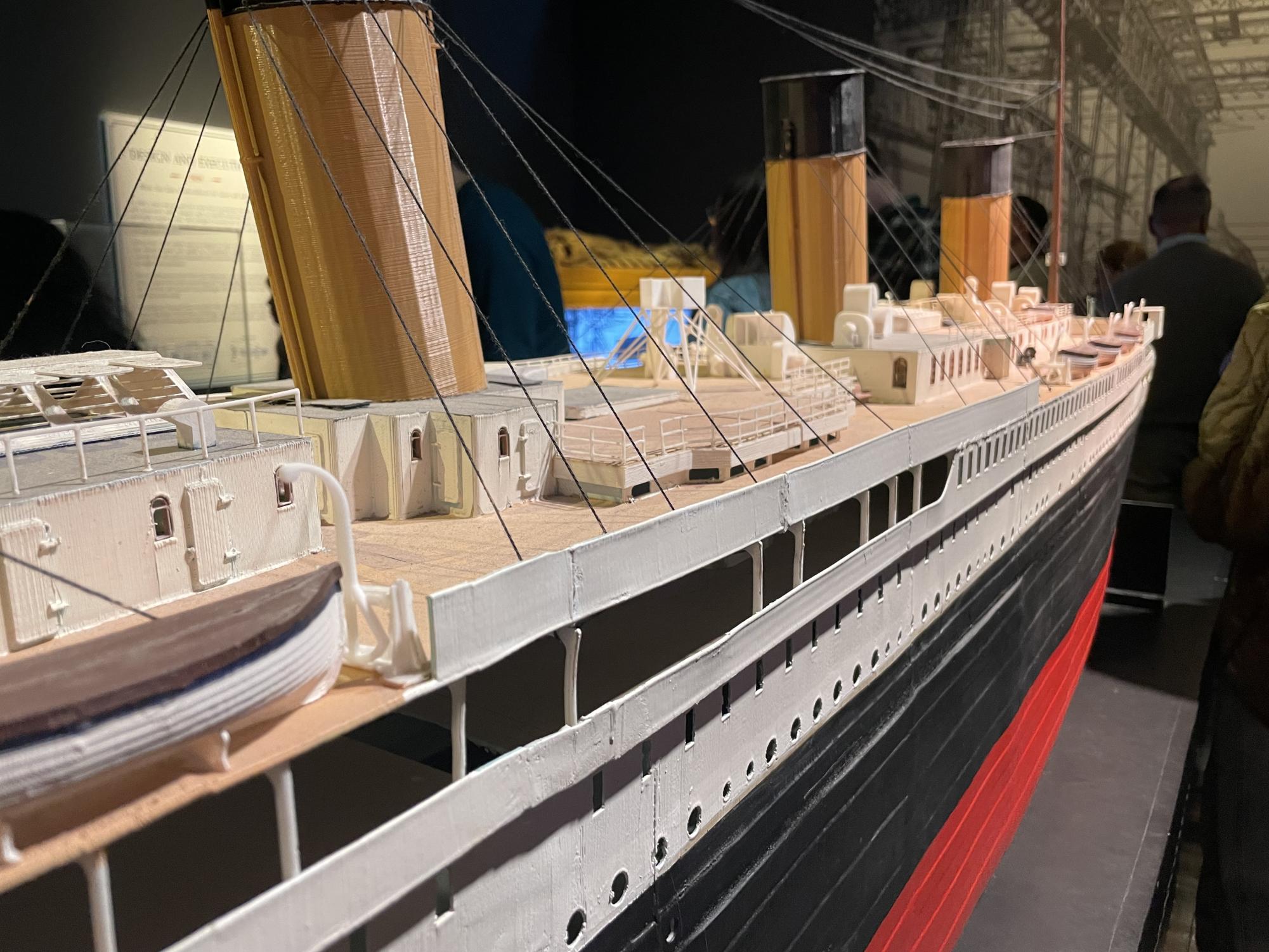I’ve always been a huge fan of James Cameron’s 1997 film, “Titanic.” I love the action, the characters, the romance, and the history. When I learned it was based on a true story, I became fascinated by the Titanic and the events that unfolded on the harrowing night it sank when the ship was supposed to make its week-long journey from England to New York City. Therefore, when I learned that “Titanic: The Exhibition” was opening up at Westfield Old Orchard Mall in Skokie from Feb. 16 through July 7, I grabbed my tickets right away. It did not disappoint.
The tickets were only around $35 per person, and the experience was supposed to take an hour. On the day of, I was nervous because I didn’t know what to expect. I wanted the exhibit to be as amazing and influential as Cameron’s film, and something that would bring back my love and interest in the Titanic.
I wanted the exhibit to be as amazing and influential as Cameron’s film, and something that would bring back my love and interest in the Titanic.
When I first walked into the exhibit, I was handed a boarding pass with the name of a real passenger who was on the Titanic when it sank. My name was Mary (Minnie) Coutts. I was 36 years old, from London, had an unknown occupation, was traveling with my two sons, William and Neville, and was a third-class passenger. This addition made the experience more personable because it helped me to not forget that the sinking of the Titanic was a real tragedy.
Then, once everyone from my time slot had arrived, we were led to a small room that displayed a video which explained the history of the Titanicand welcomed people to the exhibit. I felt as excited as Mary Coutts might have felt as she boarded the ship, and I could feel a similar anticipation from my fellow passengers. There were people of all ages, from toddlers to the elderly, which made me realize just how much of an impact this century-old ship has had on countless generations.
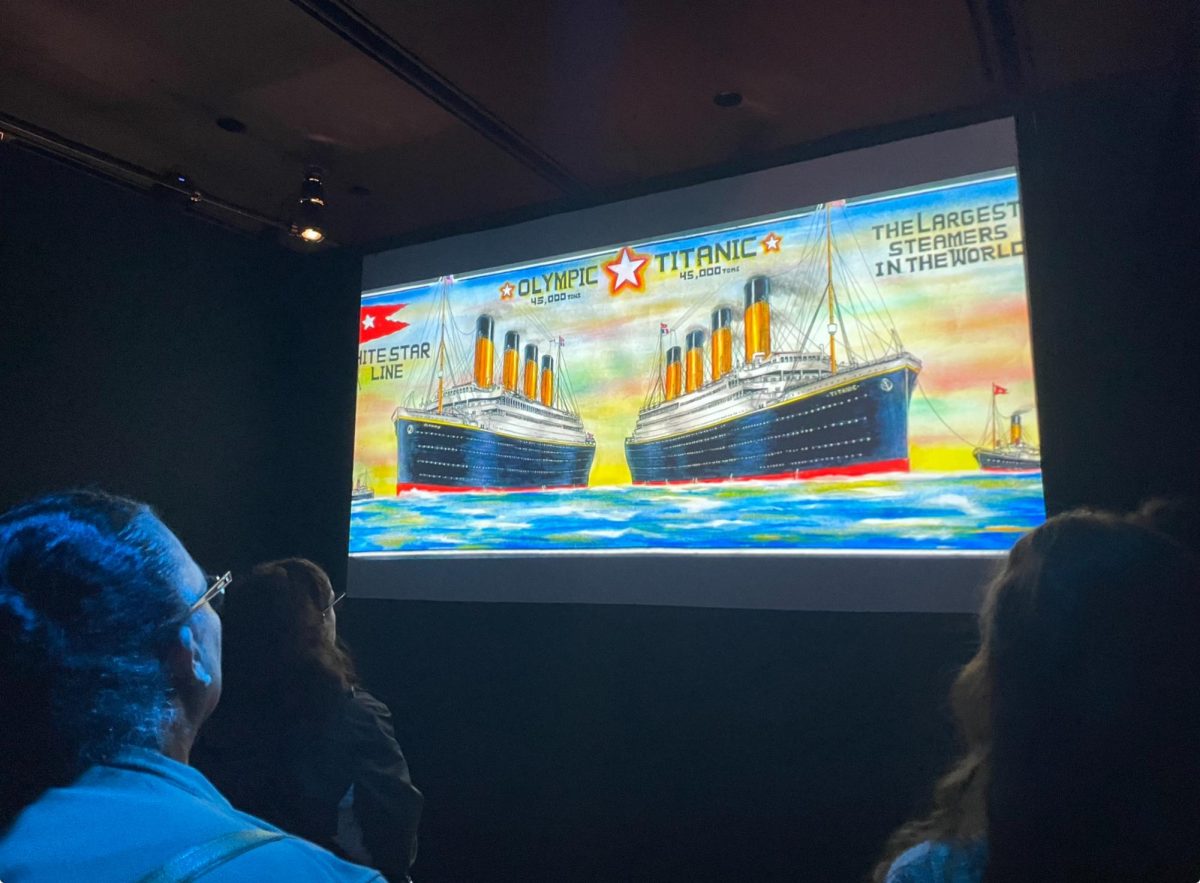
The construction
The first room was filled with artifacts surrounding the White Star Line, the ship line that built the Titanic. There were brochures, postcards that advertised the Titanic and its sister ship, Olympic, tools used to build both ships, and countless photographs of the construction. However, my favorite part of the room was the large model of the Titanic that sat in the middle of the room. It included the Titanic’s length, height, depth, draught, breadth, and gave a nice visual of the Titanic’s top deck and coloring. It was 883 feet long which shocked me. It was the largest passenger ship in the world during that time period, and it fascinated me since this was a new fact.
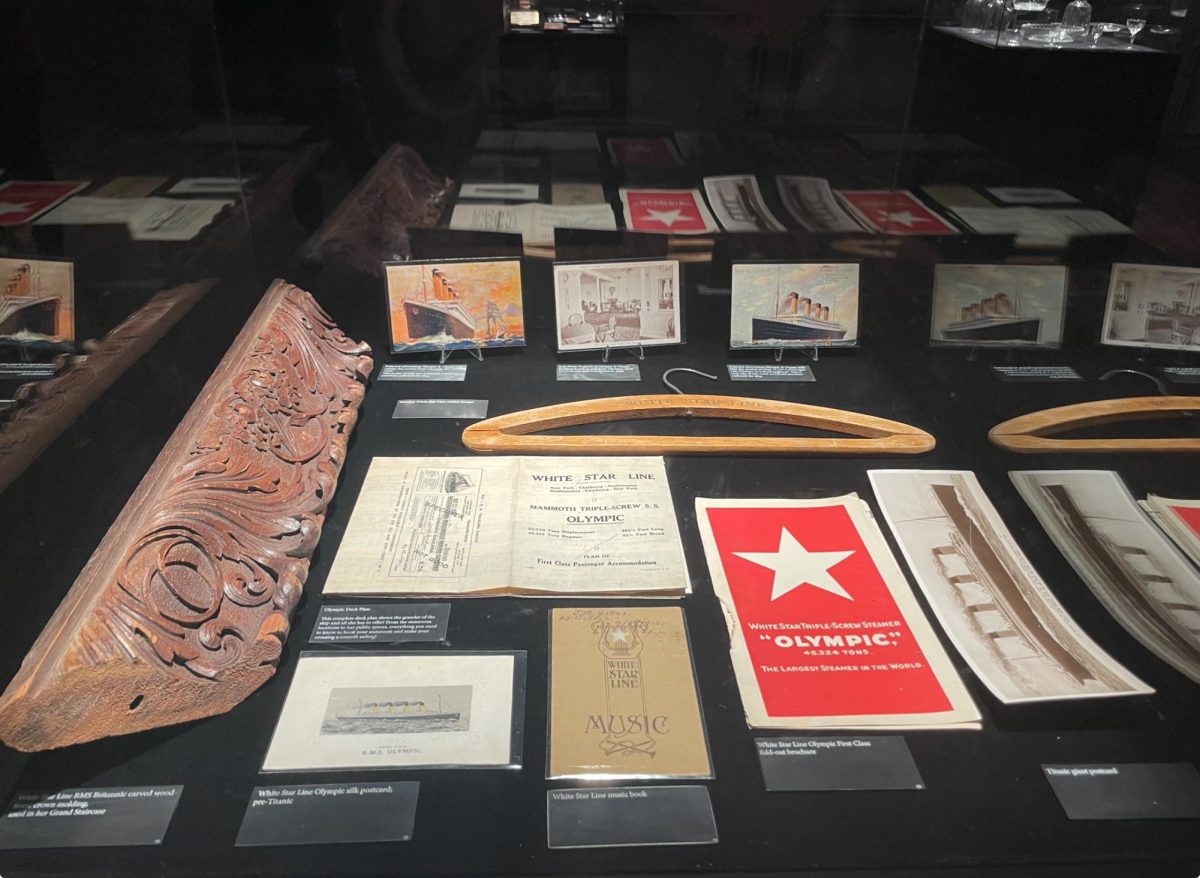
Additionally, the room was decorated with wooden boxes and large metal chain links around the floor. A black and white video played with footage of workers constructing the Titanic. I loved how the room had a wide variety of videos, interesting props, recreations, and real-life artifacts that made it come to life. I think all of this variety is what made it so engaging for all people. Not everyone wants to read informational paragraphs, as some people are able to retain information better through visuals, and younger audiences are most likely more interested to learn about the Titanic if there are things that stand out like the interactive elements.
Sailing day
The walls of the next room were adorned with pictures of the crew and information about important people involved with the Titanic, such as Captain Edward James Smith. The rest of the room was filled with more artifacts including a White Star Line stewards vest, luggage tags, a gold pocket watch from a man who worked on the Titanic, and a postcard sent from a Turkish bath attendant, Leonard Taylor, who was on the Titanic, to his mother. In his postcard, he expresses how a postcard doesn’t do the size of the Titanic justice.
The crowded room simulated how I’m sure the chaos of the day the Titanic boarded felt. All the workers, passengers, families, and commodities all existed in the same space at the same time, in the same mayhem.
Accommodations
My favorite part of the exhibit mimicked the boarding check-in. One wall of the room was painted red and black, just like the exterior of the Titanic, and had a wood panel leading through a doorway, just like how it was as passengers crossed a dock to board the ship. Through the door, there was a long hallway with plush red carpets and trimmed white walls. There was a sign that read “check your boarding pass to determine your gate location.” The gate that led to the fancy hallway was the one for first class.

This addition to the exhibit stuck out to me so much because it encapsulated the luxury that the Titanic had during its time. Not only did the experience once again bring the ship to life, but it made learning history fun and interactive.
Past the hallway was an area that talked about the first-class accommodations, including the smoking room, reading/writing room, swimming pool, gymnasium, and Turkish bath. The most expensive rooms on the ship were $3,300 ($77,500 today) for a one-way trip, making it one of the nicest ships around at the time. It was a lot larger and more comfortable than other ships, and even the first-class accommodations on the Titanic were better than most second-class accommodations on other ships.
The exhibit included a life-sized model of what a first-class sitting room looked like. It included a velvet yellow couch, wooden mantle fireplace, and wood panel walls. Visitors weren’t allowed inside the space, but it was very interesting to experience the room at that level.
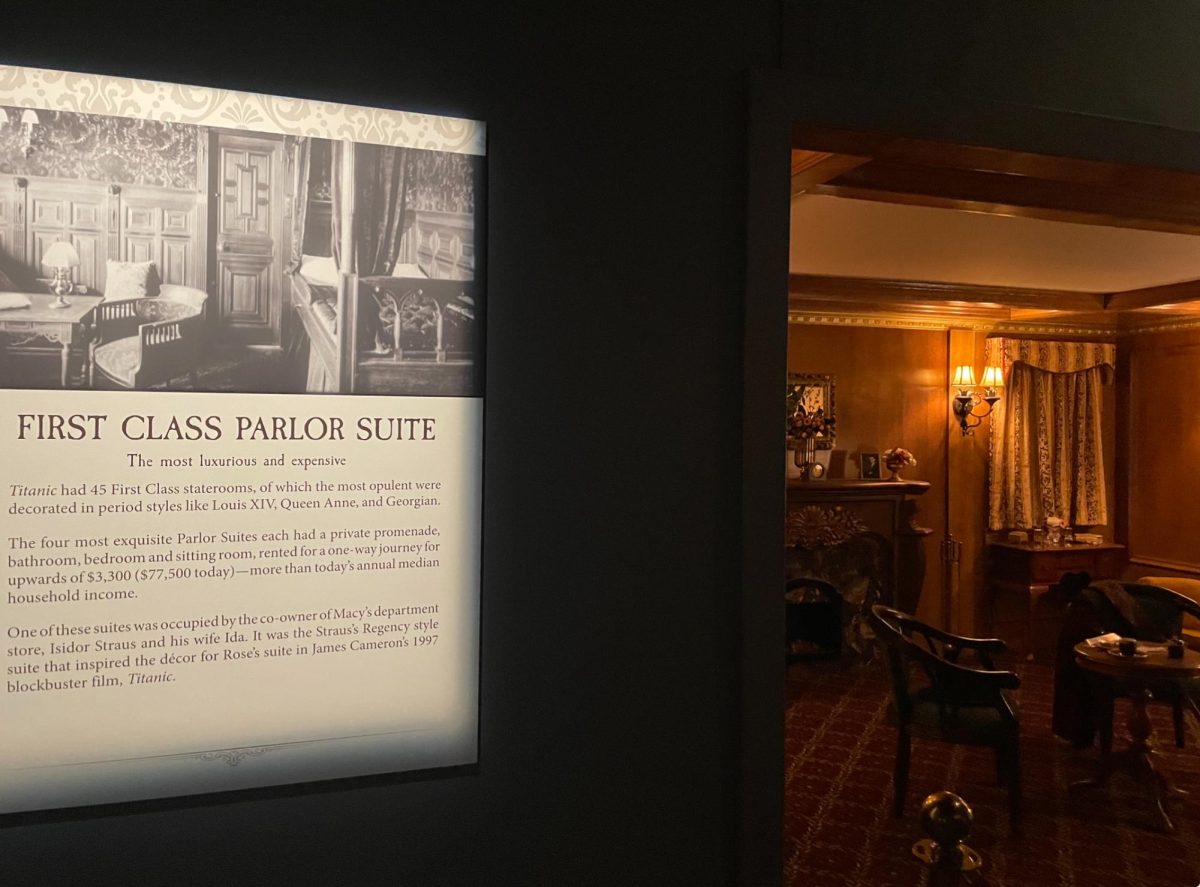
The rest of the space had countless first and second-class artifacts, which included restaurant silver and cutlery, china tableware, and even a cup and saucer with a pattern made just for the Titanic. Additionally, there were artifacts from Titanic’s sister ships, the HMHS Britannic and RMS Olympic. The most fascinating thing I found was a first-class dining chair. Artist Ken Marshall was given a small sample of the chair’s fabric and was able to construct and recreate it.
A popular picture spot was at the “hub of first class life,” aka The Grand Staircase. Obviously, the recreation of The Grand Staircase was not to scale; however, the designs along the railings and pillars in the space made it feel very regal and fancy. The addition of waltz music in the background of the exhibit helped it feel more regal and made me feel like I was in the scene from “Titanic,” where Jack escorts Rose down the stairs.
In the corner, there was a display that held a piece of carved wood recovered from the sea in 1912 by one of the ships hired to collect the bodies after the sinking. Oddly enough, it was captivating being in the presence of that little scrap of wood that had survived for so long. It was only around three inches long, but it held so much history.
Farther along, there was a tiny break in the wall which layed out a third-class room. It was narrow and held two bunk beds on either wall. There wasn’t much space for anything else; however, even these accommodations were better than those of second-class on other ships during that time period.
Sinking/aftermath
The next room had a large iceberg, sound effects of cracking ice, a starry backdrop, and blue glow. The walls held a timeline of the night the Titanic sank, beginning Sunday, April 14, at 11:40 p.m. when the ship hit the iceberg, to Monday, April 15, at 5:10 a.m. when the last lifeboat offloaded its passengers on the Carpathia, the ship that came for survivors.
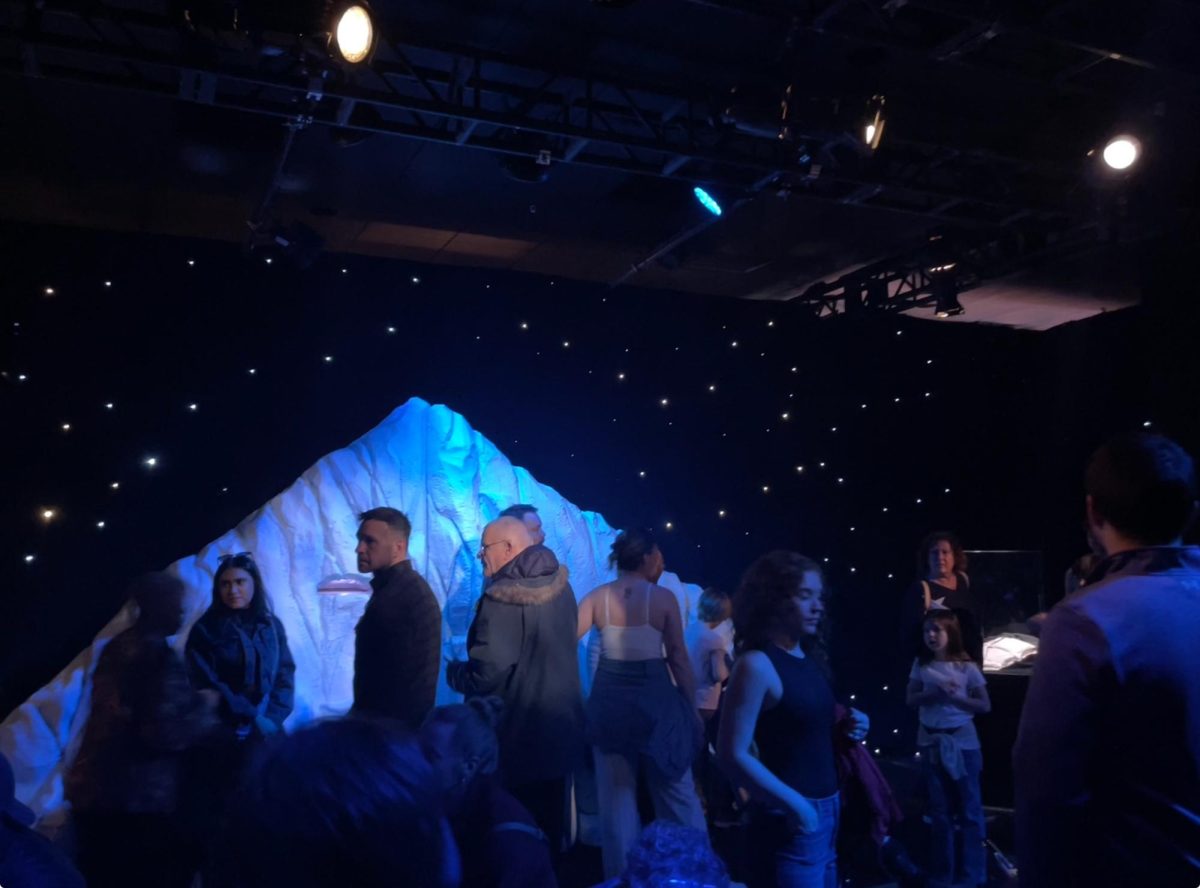
The change from elegance and fancy cutlery to the dark night and panic felt very abrupt, just as it was in real life. I could tell people were less excited and more thoughtful in the way they walked around the room and scanned all the little details. Rather than taking selfies, people studied the timeline on the wall and were less inclined to rush past the informational panels on the walls.
Eventually, I followed the crowd into the next room that highlighted the aftermath of the sinking. There was a large wall with the names of the survivors and those who passed away. Remember that boarding pass I mentioned at the beginning? Since all the passes were based on real passengers, you could look on the wall to see if “you” lived or died. I, Mary Coutts, passed away. It made the experience a lot more engaging and caused people to actually read through all the names on the walls and in the process acknowledge everyone who died.
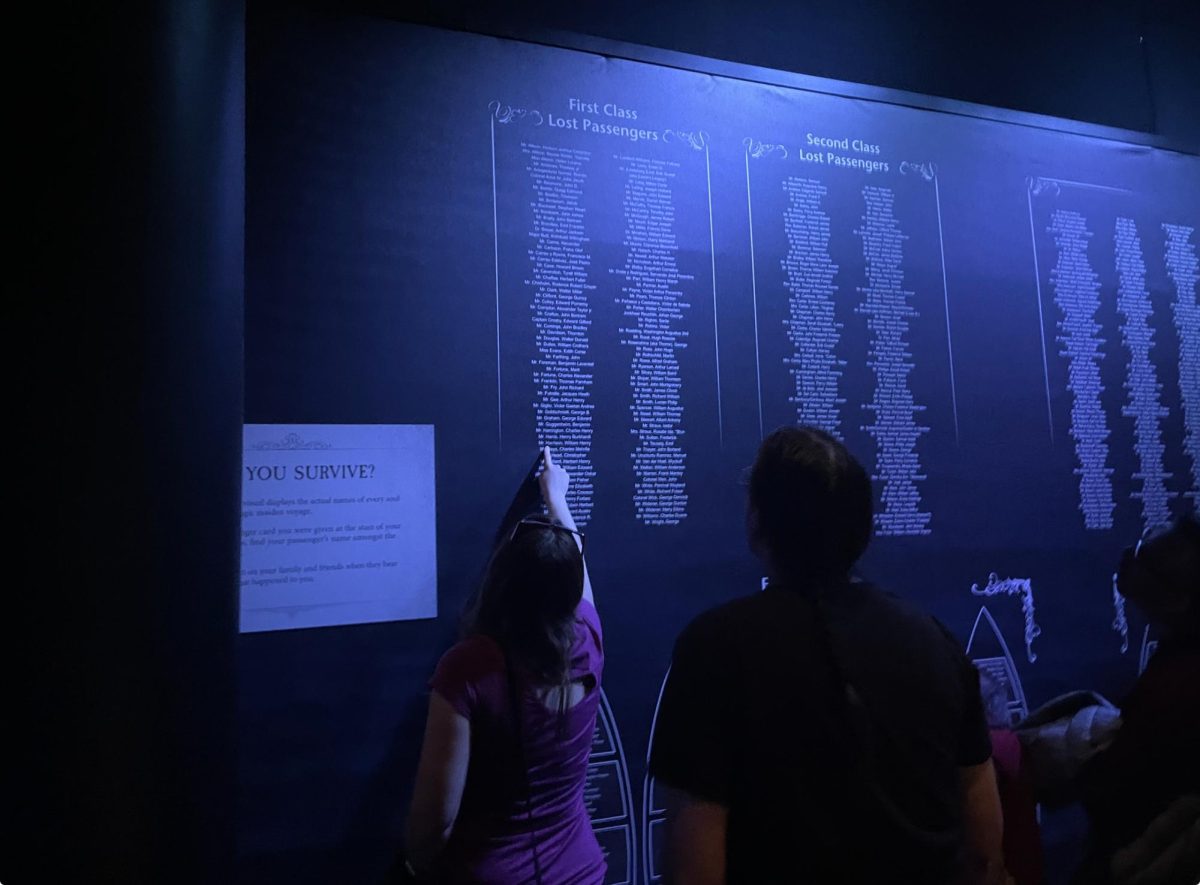
The room also had somber music and, besides the wall of names, wallpaper of newspapers from the time of the sinking reporting on the event. It was very compelling and the exhibit did a great job of capturing the tragic nature of the event, and remembering every life.
The shipwreck
The last section touched on the search for the underwater remains of the Titanic. The room had sandy ground with broken dishes, boarding passes and other lost items from the wreck.
There were glass walkways above this and videos showing how far down the different pieces of the Titanic are, since the ship split in two when it sank.
Some of the artifacts in the room included a jacket from one of the recovery expedition teams and a notebook containing sketches and notes about the many dives.
A video played showing footage captured of the wreck at its final resting place 12,500 feet below the surface of the Atlantic Ocean, where it’s currently disintegrating. Research suggests that nothing will be left of the Titanic by 2050.
Overall, I really enjoyed the exhibit. It was executed beautifully and was as educational as it was engaging. Although you were with a certain group of people, you were able to walk around at your own pace, and because you had to buy tickets, it was never too congested, which made for an easier viewing experience.
I definitely recommend checking out this exhibit if you know nothing, or even a lot, about the Titanic. It’s great for all ages, and it makes for an interesting afternoon activity.
For me, revisiting the Titanic through this exhibit was a great way to keep the history of it alive.


